Projects are delicate operations. There is so much that can impact them; a storm cutting off the supply chain, equipment failure or a labor dispute are merely three possible situations in a seemingly endless succession of risks.
The risk response plan that you create to deal with these risks, which describes risk identification, assessment, and mitigation response strategies, could mean the success or failure of the project. It’s no wonder so much of project management is focused on risk!
Controlling risk, having a risk response plan and implementing risk response strategies are methods to better manage your project and deliver success. Another way is to have project management software to plan and track your risk response strategies.
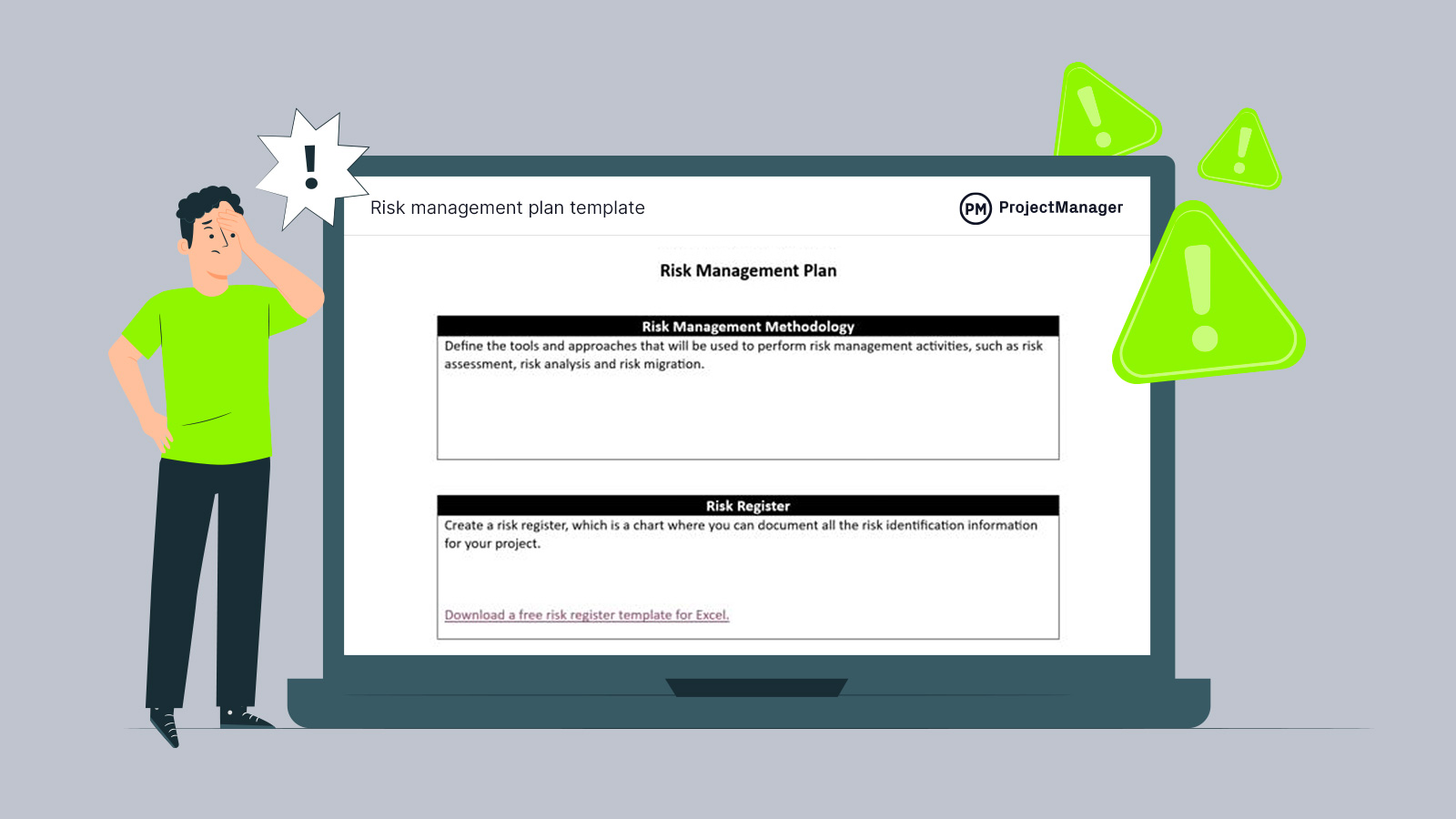
Get your free
Risk Management Plan Template
Use this free Risk Management Plan Template for Word to manage your projects better.
What Is a Project Risk?
A project risk is an uncertain event that can potentially impact a project, either positively or negatively. Project managers need to create risk response plans that describe the risk mitigation strategies they will use to minimize the negative effect of risk events.
What many don’t think about is that risk can also be good for a project. Negative risk? A blackout-causing storm that halts production. Positive risk? The price for the materials you need for your project has dropped considerably. In project management, negative risks are commonly referred to as threats, while positive risks are known as opportunities.
- Negative Risks (Threats)
- Positive Risks (Opportunities)
Whatever type of risk you get, you want to have a risk register and a risk response plan for dealing with it.
While it’s impossible to prepare for everything that might happen in a project, with the use of historical data, experience and luck, you can identify project risks that are likely to occur and then create a plan to respond to them.
Create a Risk Response Plan Online With ProjectManager
Identifying risks is only the beginning. You need project management software to manage those risks. ProjectManager is online software that can manage your risks in real time.
- Create detailed response plans with powerful Gantt charts with dependencies and baselines
- Create risk logs and collaborate on resolutions with your team
- Set priorities, add tags and create a risk matrix to identify impact and likelihood. Try it free
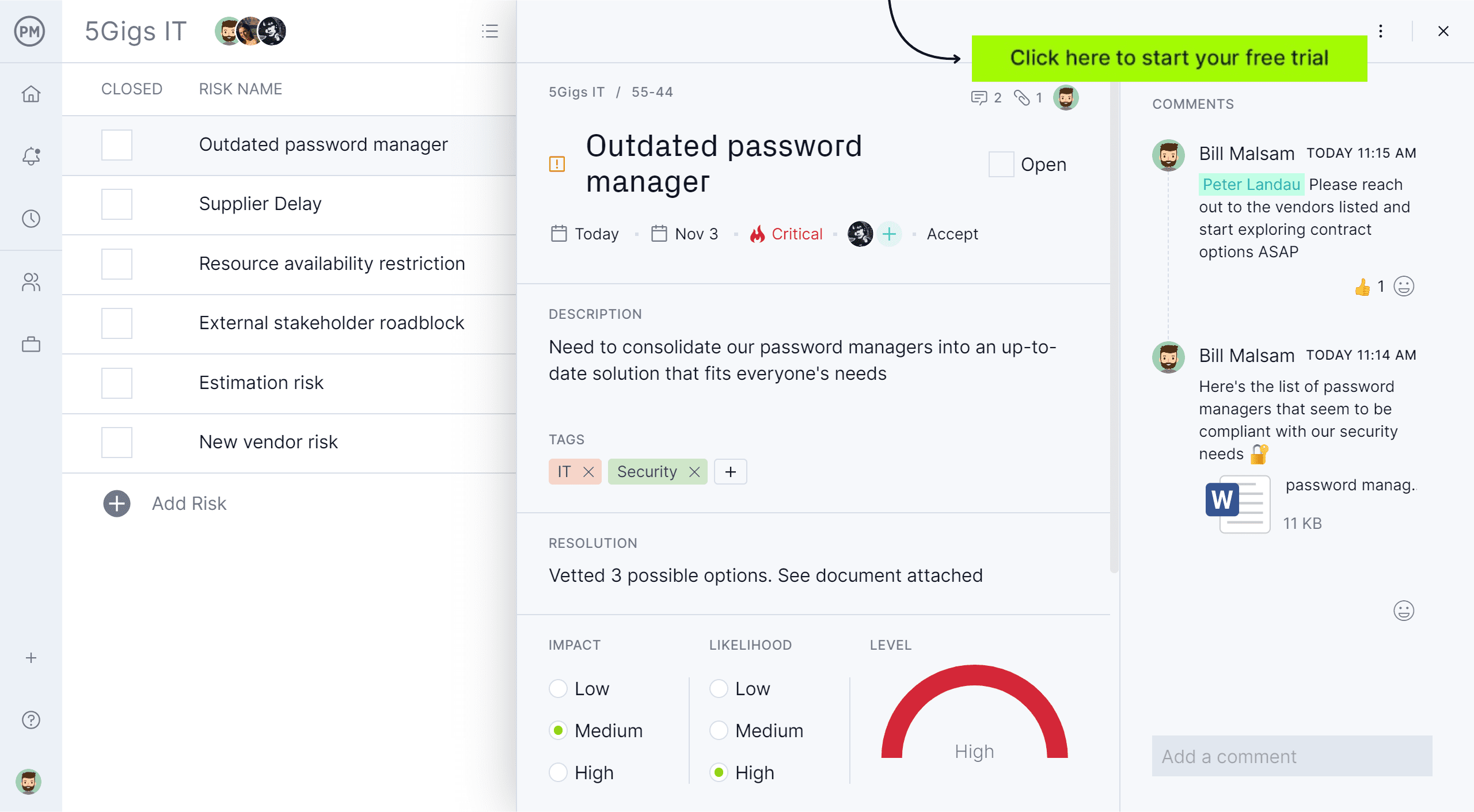
What Is Risk Response?
Risk response refers to the actions taken to manage and address identified project risks in project management. When the risks are identified, analyzed and prioritized, the project team develops strategies and actions to help reduce the negative impact of threats or increase the likelihood or impact of opportunities. The goal is to bring the project’s overall risk exposure to an acceptable level to increase the chances of meeting project objectives.
What Is a Risk Response Plan?
A risk response plan is a document that explains the strategies that would be taken to mitigate negative project risks. It’s part of the larger risk management plan that is subsequently part of any project management plan.
Risk response is just as it sounds. You’re responding to risks. To do so, project managers must work with stakeholders, secure resources for the risk response strategies and assign risk owners to deploy them. Before you respond to risk, you have to identify it. Risk identification is done in the project planning phase. While the definition of risk is uncertainty, that doesn’t mean that every potential risk to your project is going to come out of left field and surprise you.
Good risk response starts with good risk identification. As noted above, you can figure out a lot of potential project risks by looking at similar projects you managed, talking to your experienced project team members about what they think could happen and reaching out to stakeholders and mentors.
Why Is a Risk Response Plan Important in Project Management?
Since risk happens, having a risk response plan is important. Managing a project is all about organizing activities to meet schedules and budget constraints. Project risks can impact that timeline and increase costs. The quicker you identify them and resolve any issues that come up, the more likely you are to deliver a successful project.
Therefore, a risk response plan is a way to reduce or eliminate any threats to the project. It can also be used to increase the opportunity offered by positive risk. That is, if there are positive risks that can help the project, a well-thought-out plan sets up how to quickly gain as much advantage from it as you can.
Sometimes, risks are not going to be resolved. The risk response is also a way to put a contingency plan into action. That is, have a Plan B when you can’t proceed the way you have been in the project.
Again, a risk response plan gives the project manager options. It provides awareness of the many risks that might occur in the project and provides various means of addressing them.
Free Risk Response Plan Template
Identifying and managing risk is made easier with a reliable process. This free risk management plan template will help you build a risk response strategy by addressing the fundamentals of risk management. This Word document will help you identify risks, propose a risk breakdown structure and more. Download yours today.
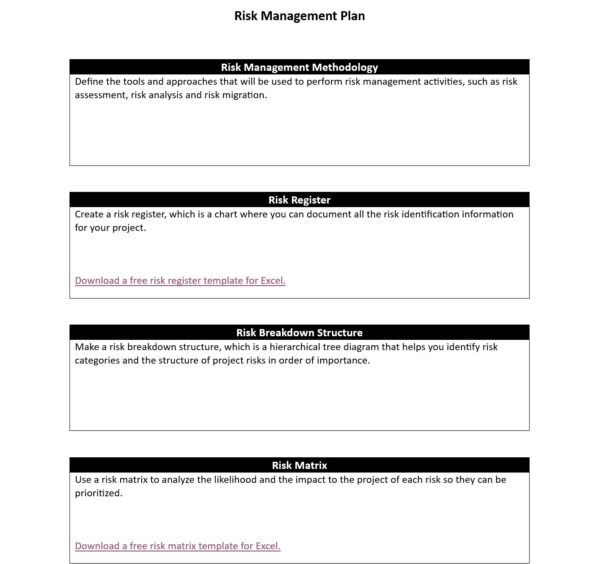
Types of Risk Response Strategies
We’ve talked a lot about having a risk response to address positive and negative risks as they show up in your project. That’s where a risk response plan comes in.
A plan gives the project manager a variety of risk response strategies to mitigate negative risk if it occurs. As defined, risk is uncertainty that can impact a project in either a negative or positive way. As such, there are strategies for maximizing the benefit of positive risk.
Risk Response Strategies for Negative Risks (Threats)
The main risk response strategies for negative risks are listed below.
Avoid
This risk response strategy is about removing the threat by any means. It’s a proactive approach that aims to eliminate the possibility of a risk occurring to help protect the project from its impact. That can mean changing your project management plan to avoid the risk because it’s detrimental to the project. This strategy is ideal to use when the risk has a high probability and/or a significant negative impact. It’s also useful when the risk is beyond the organization’s risk tolerance and there are viable alternatives.
Mitigate
Some project risks you just can’t avoid. Risk mitigation involves planning, developing and implementing options to reduce the probability of a risk even occurring. The goal isn’t necessarily to eliminate all risk, but instead to reduce it to a more acceptable level. Risk mitigation is usually used when the risk cannot be avoided entirely or the potential impact is significant enough to warrant action. It’s also used when there are opportunities to reduce the likelihood or impact through specific actions.
Transfer
As the name implies, here you’ll transfer or pass the work on resolving the project risk to a third party, such as buying insurance or getting a warranty and guarantee. The core of a risk transfer is moving the potential financial impact of a risk event to another entity. The party inheriting the risk usually utilizes a formal agreement or contract when accepting the risk.
A risk transfer is typically utilized when there aren’t enough resources or expertise available to manage a specific risk. It also allows the project team to focus on core project objectives and they can minimize distractions when risk responsibilities are transferred.
Monitor
Risk monitoring consists of continuously tracking identified risks and monitoring trigger conditions. It aims to answer questions like “how has the risk changed, are there new risks that have emerged or are the risk mitigation plans working as expected?” Large, complex projects benefit from risk monitoring or those with tight deadlines or budgets. It’s also useful in projects utilizing new or unproven technologies.
Buffer
This strategy revolves around adding extra resources, such as time or budget, to a project plan to absorb potential disruptions or negative impacts that a risk can cause. It creates a cushion that helps the project stay on scope, schedule and budget even if the risk materializes. This approach is especially useful when the project has a high degree of uncertainty or the impact of potential risks can be significant. It’s also used in projects where maintaining the project timeline or budget is critical.
Accept
This risk response strategy consists of identifying a risk and documenting all the risk management information about it, but not taking any action unless the risk occurs. This is a deliberate decision, not an oversight, as the team consciously accepts the potential consequences should the risk occur.
Risk acceptance is typically used when the potential risk impact is low or the probability of the risk happening is low. It may also be used when there are no cost-effective alternative responses or if the project has sufficient contingency reserves.
Risk Response Strategies for Positive Risks (Opportunities)
On the other side of the coin, there are those positive risks that you want to exploit. There are three strategies for these, too:
Exploit
When there’s a positive risk or opportunity you want to exploit, you need to add more tasks or change the management plan to take advantage of it. There is risk inherent in this approach, but often the reward is worth it.
Unlike strategies for negative risks that aim to avoid or mitigate harm, the exploit strategy revolves around actively pursuing opportunities. It’s the ideal strategy to use when the positive risk has a significant potential benefit and the cost and effort to exploit the risk are justified by the potential benefits.
Enhance
Here, you increase the chance of a positive risk occurring in your project and increase its positive impact on objectives. Think of this strategy as nurturing a potential opportunity to maximize its upside for the project. It targets either making the opportunity more likely to materialize or increasing positive consequences if it does.
This strategy is ideal when the risk has significant potential benefits and the cost and effort to enhance the risk are justified by the potential benefits.
Share
Here you’ll share the risk response with other partners across various teams or projects. It might mean sharing a skilled team member across various projects. The rationale is that another entity may have better expertise, resources or capacity to capitalize on an opportunity or reduce the impact of a threat.
It’s the preferred approach when another party has a clear advantage in managing the risk or sharing can lead to greater efficiency or effectiveness in capitalizing on an opportunity.
Accept
The accept risk response is choosing not to take any proactive action to pursue the opportunity. It’s often done when the opportunity has a low probability of occurring or the potential impact is small.
Teams use this strategy when the likelihood of a positive risk materializing is very low or if there’s a high cost or effort to exploit the risk.

What If There’s Both a Positive and a Negative to a Risk?
Sometimes risk can have both a threat and an opportunity embedded within. In that case, there are a couple of risk response strategies you can apply:
- Accept: Here you accept the risk and wait until an adequate response can be determined, such as a contingency plan or allocation of time and cost. This decision must be shared with stakeholders.
- Escalate: If the risk cannot be monitored and is beyond the management of the project, it is escalated to a higher level, such as program or portfolio management.
How to Make a Risk Response Plan
Only once you understand the types of risk response strategies you can begin to develop a risk response plan. The risk response planning process is where you outline the strategies that you’ll use to manage negative risks (threats) and positive risks (opportunities).
The plan will include the identification of risks, tasks associated with responding to them and the risk owner who takes action. The plan is a way to structure your strategies to make sure that no steps are skipped.
You have to take into account the probability and level of impact of a risk and prioritize your response to it. Then, determine if it’s cost-effective and realistic and whether it will be successful if followed through. Your risk assessment must be agreed upon by all those involved, especially the project stakeholders.
The plan will employ one of the risk response strategies listed above. Then, there will be risk triggers that set off the plan. These responses must be prioritized as well, from low probability and low impact to high probability and high impact. This will help you determine which risks to respond to.
How ProjectManager Helps with Risk Response
ProjectManager is online software that helps you organize your plan, monitor its progress and report to stakeholders to keep them updated on your progress. ProjectManager delivers real-time data that helps identify risk faster and track your risks in real time.
Create Risk Response Plans on Gantt Charts
Build robust risk response plans on our interactive Gantt charts. You can add risks to your plan as you would task, adding whether to avoid, mitigate, transfer or accept the risk. You can also add documentation and note if the status is opened or closed. Then share the Gantt chart with your team and stakeholders so everyone is in the loop.
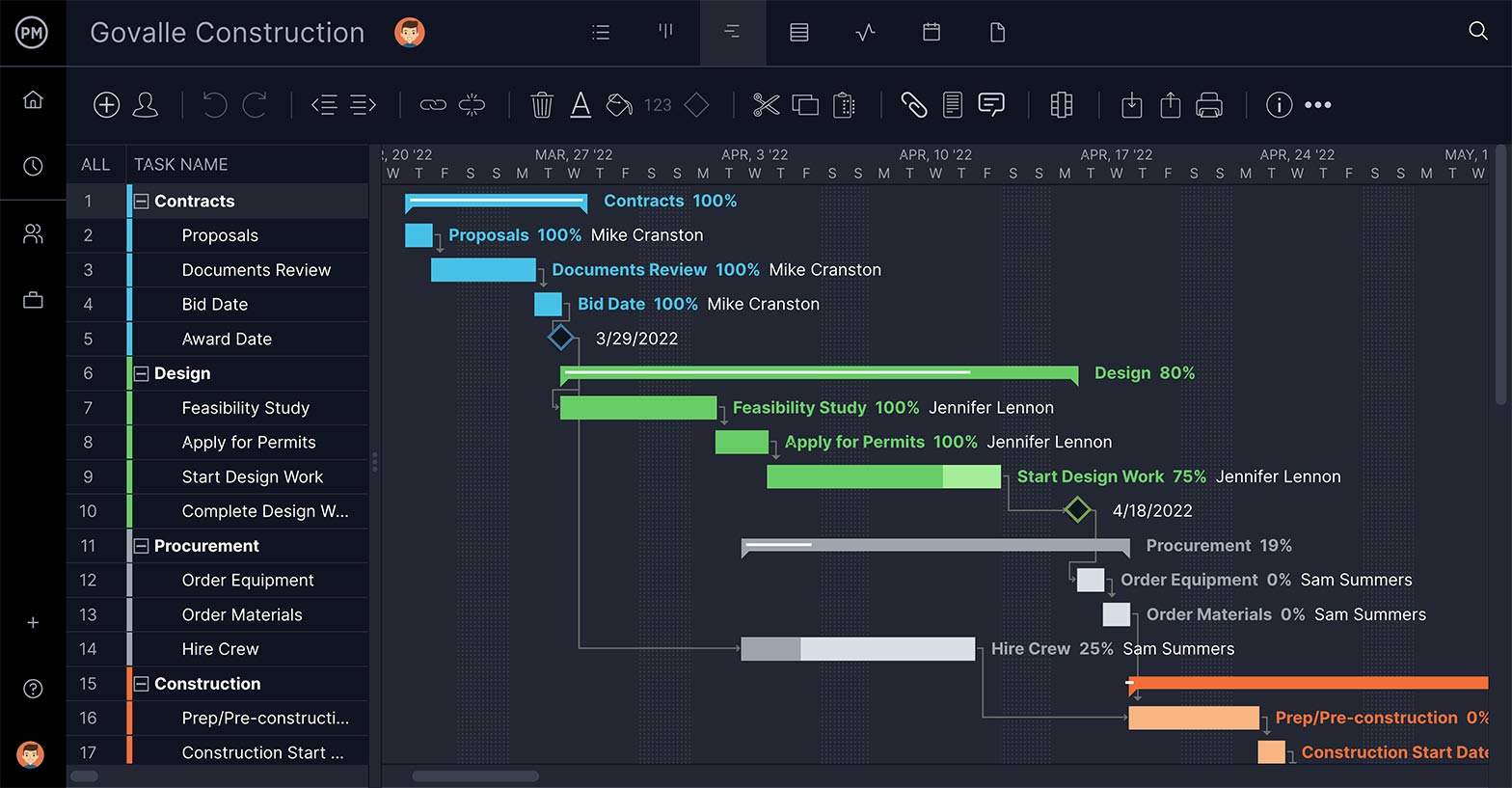
Use Multiple Project Views
Teams won’t always need the details of a Gantt chart. In this case, they can simply toggle to another project view to execute their work while resolving risks. Teams can use a robust list view or utilize the visual workflow of a kanban board to manage their backlog and collectively plan sprints. Managers get transparency into the process and can relocate resources as needed to avoid bottlenecks.
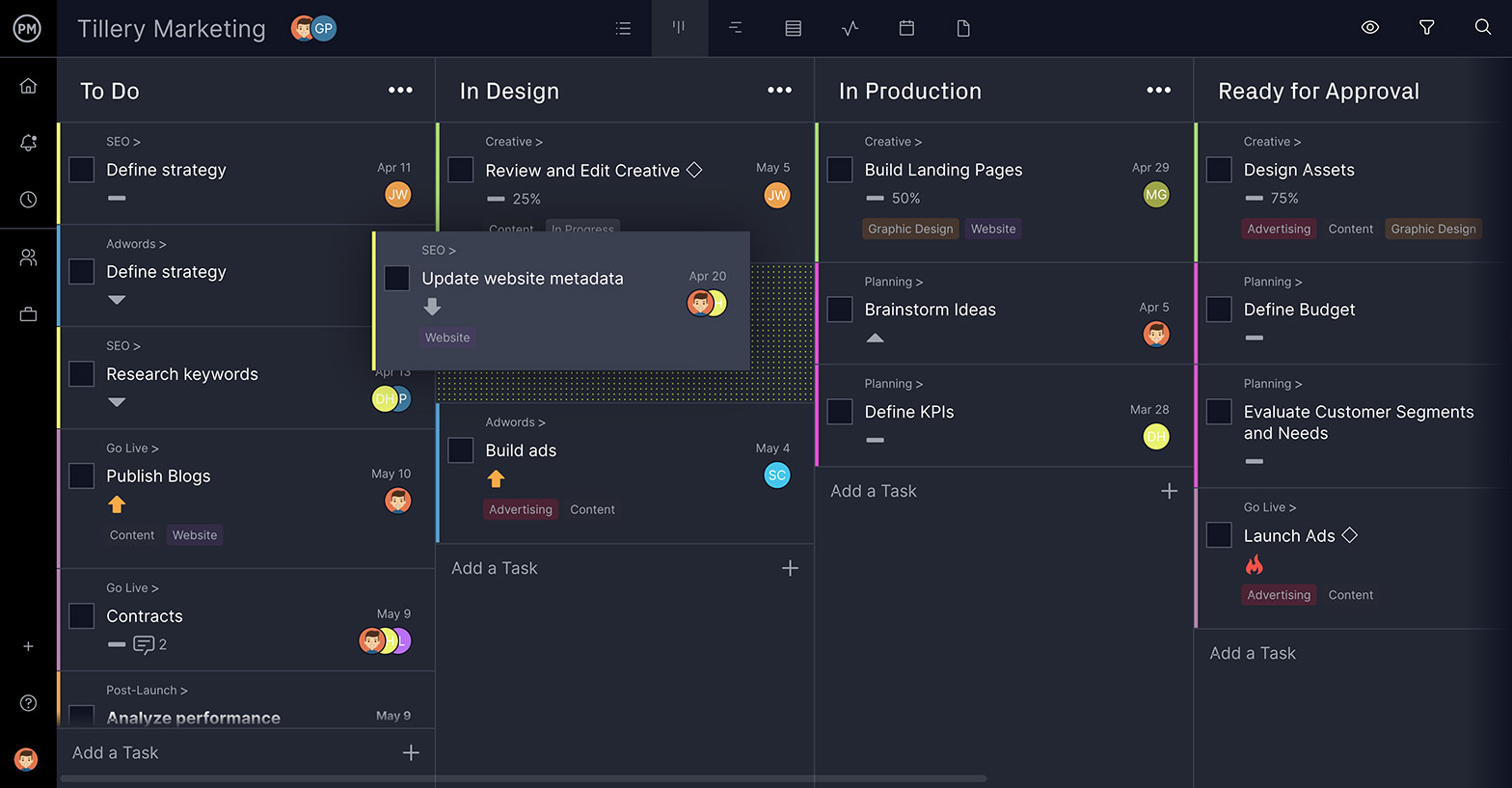
Track Risks in Real-Time on Project Dashboards
Another tool to give managers a high-level view of the risk response is the real-time dashboard. Unlike lightweight tools, our dashboard doesn’t have to be configured. It’s ready to work when you are. It automatically collects status updates and calculates project metrics, which are then displayed in easy-to-read charts and graphs.

ProjectManager is award-winning software that organizes, tracks and reports on project risk with live data that informs insightful decision-making. Keep your teams connected whether in the office or distributed across the globe. See why NASA, the Bank of America and Ralph Lauren use our tool to work more productively. Try ProjectManager free today!

